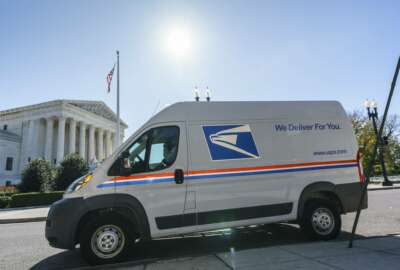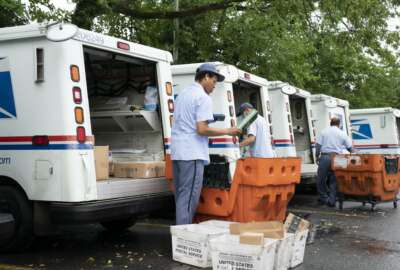

House Democrats and Republicans are telling the Postal Service to push a price increase on its mail products from the end of this summer to at least January 2022.
House Democrats and Republicans are telling the Postal Service to push a price increase on its mail products from the end of this summer to at least January 2022.
Two members of the House Oversight and Reform Committee, Government Operations Subcommittee chairman Gerry Connolly (D-Va.) and National Security Subcommittee Ranking Member Glenn Grothman (R-Wis.) are leading 11 other Republicans and eight other Democrats in calling on USPS to delay the price increase, which will take effect Aug. 29.
Lawmakers warn Postmaster General Louis DeJoy that raising prices at a time when USPS revenues are increasing would be “premature and counterproductive.”
The price hike would raise the price of a first-class from 55 cents to 58 cents and would generally raise the price of mail products by about 6.8%, while magazines, newspapers and catalogs would see an 8.8% price increase. USPS raised prices on its “market-dominant” mail products in January by 1.8% to keep up with the rate of inflation.
“We have heard clearly from employers in our districts and across the nation that a second increase in a single year will be highly disruptive and result in significant job losses and significant reduction in their use of Postal Service mail services,” the lawmakers wrote. “Many of these companies, especially small businesses, cannot afford a second increase, saying such action will reduce revenues and lead to job losses.”
The rate increase stems from the Postal Regulatory Commission’s final rule last November that kept a price cap on market-dominant products like first-class mail, but based the cap on changes in mail density and USPS pre-funding retiree health benefits. The final rule concluded a 10-year review of USPS mail rates.
The USPS price increases would max out its new rate-setting authority from the PRC. USPS raised the price of a first-class stamp from 50 cents to 55 cents in January 2019, the biggest price increase in the agency’s history.
Pushing back the rate increase, House lawmakers told DeJoy, would give USPS more time and “greater clarity” to determine the pandemic’s long-term effects on its sales and revenue.
The bipartisan coalition is also asking DeJoy and the USPS Board of Governors to provide projections of how the rate increases would affect mail volume and use over the next year, three years and five years.
“Any requests to increase these costs must include financial projections that account for whether changes to the mail mix prompted by the pandemic will continue,” lawmakers wrote.
House lawmakers, meanwhile, are considering a postal reform bill that would save USPS $40 billion to $50 billion over the next 10 years. The House Oversight and Reform Committee passed the 2021 Postal Service Reform Act in May with strong bipartisan support.
A companion bill in the Senate has support from 10 Republicans and 10 Democrats. If passed, it would be the first major postal reform legislation in 15 years.
The legislation eliminates the Postal Service’s requirement to pre-fund health benefits well into the future. Under this mandate, USPS has defaulted on billions of dollars in payments to the fund, but still includes the liability in its annual net losses.
The bill also requires current postal workers to enroll in Medicare Part A and B when they reach age 65. It gives current retirees the option of enrolling in Medicare, waiving the usual late enrollment penalties. Current retirees who choose not to opt into Medicare will stay in the FEHBP.
DeJoy told Congress Medicare integration and ending the pre-funding mandate are necessary aspects of postal reform that would save USPS, but would only address a portion of the $160 billion in liabilities the agency expects to incur over the next decade.
Lawmakers urge caution from USPS, on behalf of the mailing industry, which accounts for 7.3 million jobs and more than 4% of the national civilian workforce. Keeping these companies afloat, they told DeJoy, remains critical to the long-term viability of the Postal Service.
“While we continue to work to ensure the long-term financial sustainability of the Postal Service through legislation, we believe it is vital that the Postal Service not take any action that will weaken its long-term financial success by chasing customers out of the mail market,” lawmakers wrote.
USPS has nearly $22.5 billion cash on hand, according to recent Treasury Department data, but Postmaster General Louis DeJoy said in April that the agency could run out of cash by the end of 2022 without moving ahead on the 10-year reform plan.
Copyright © 2025 Federal News Network. All rights reserved. This website is not intended for users located within the European Economic Area.
Jory Heckman is a reporter at Federal News Network covering U.S. Postal Service, IRS, big data and technology issues.
Follow @jheckmanWFED



